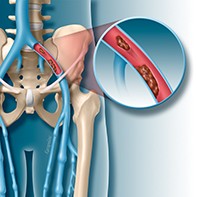Peer Reviewed
Feature Article Cardiovascular medicine
Iliofemoral venous thrombosis: developments in management
Abstract
Iliofemoral deep venous thrombosis (DVT) poses a higher risk of ongoing problems than more distal DVT. In selected patients, early treatment with thrombus removal as well as anticoagulants may significantly reduce the incidence of post-thrombotic syndrome. In patients with chronic iliofemoral obstruction, newer endovascular approaches offer promising results.
Key Points
- Patients with iliofemoral deep venous thrombosis (DVT) may have a more severe spectrum of presentations than those with more distal DVT.
- Post-thrombotic syndrome is more common after iliofemoral DVT than after more distal DVT.
- Early intervention to remove an iliofemoral thrombus and correct underlying anatomical abnormalities, as well as anticoagulation, may help improve long-term outcomes.
- Options for thrombus removal include catheter-directed thrombolysis and pharmacomechanical or surgical thrombectomy.
- In patients with chronic venous problems after iliofemoral DVT, newer endovascular interventions may improve symptoms.
Picture credit: © John Karapelou.
Purchase the PDF version of this article
Already a subscriber? Login here.

